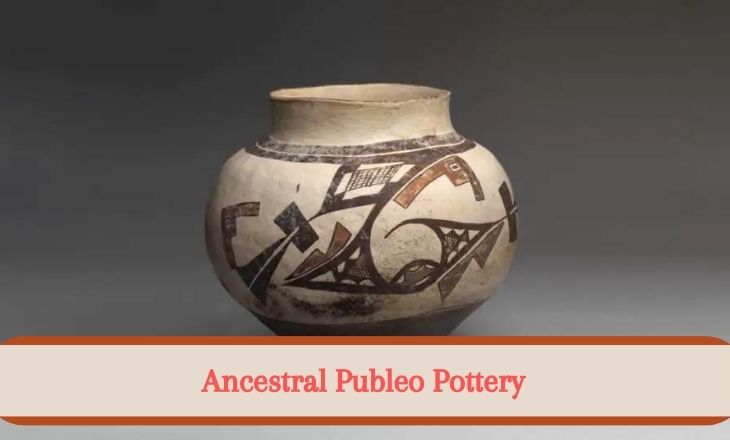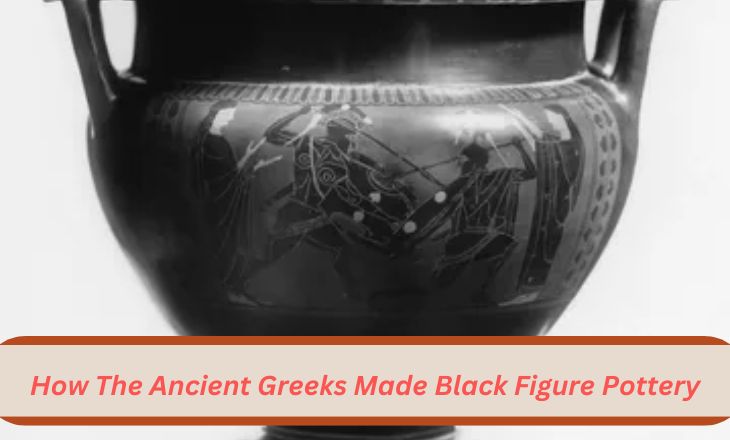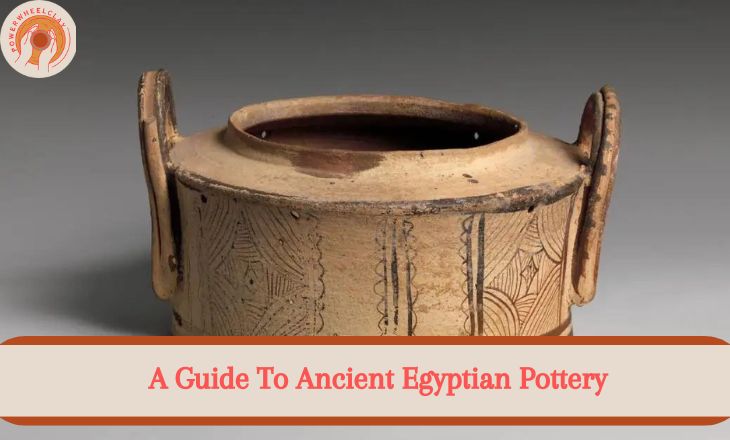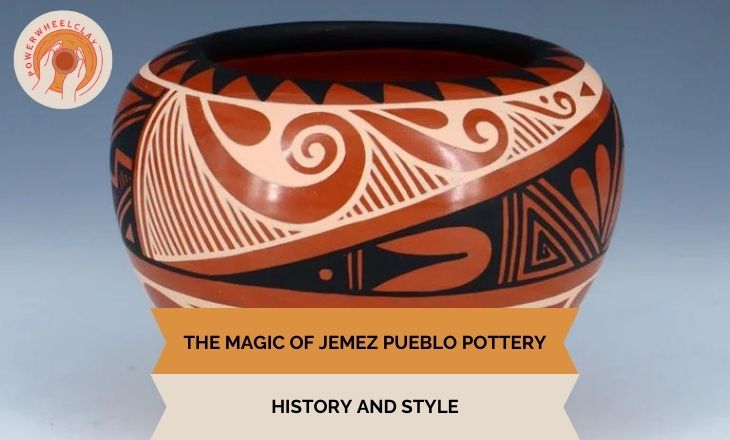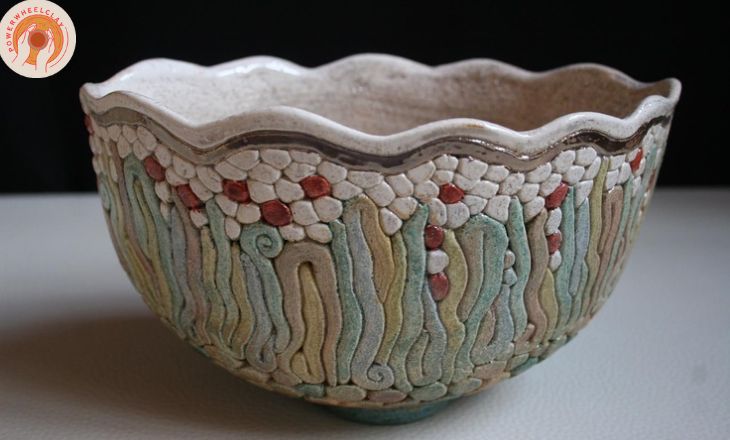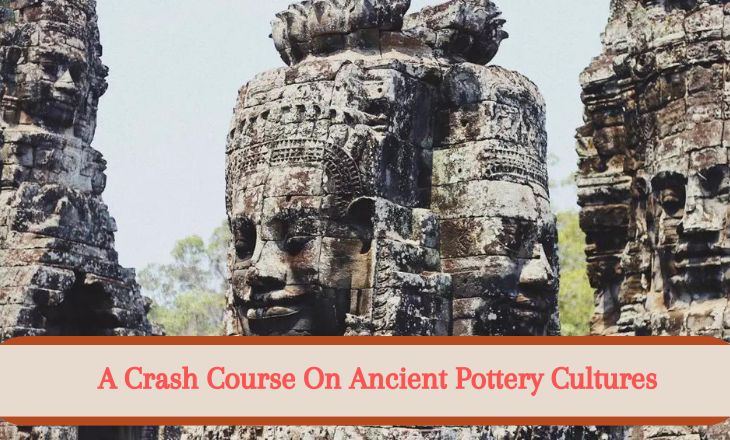A Complete Guide To Ancestral Pueblo Pottery
When we explore the world of ancient Pueblo pottery, we are taken to a place where creativity and tradition collide, and each expertly made vessel is a tribute to the creativity and talent of its makers.
Every design’s intricate details, which span many years and countries, convey tales of daily living, spiritual beliefs, and the unbreakable relationship between humans and nature.
We warmly encourage you to use this guide to discover the cultural importance of Ancestral Pueblo pottery in this vast territory at the northern frontier of Canada, where history has been carved into every ridge and polished surface.
A Brief History Of Ancestral Pueblo Pottery
Northern Arizona, home to the ancestral Puebloan people, holds a rich history of craft and artistry. The first Pueblo appeared in this region around A.D. 100, with evidence of their crafting heritage dating back over 2,000 years.
These ancient peoples developed pottery at a craftsman level of skill, creating vessels that showcased intricate designs and precise craftsmanship. These craft expressions found their perfect canvas in the vast cliffsides of Northern Arizona, where rock homes resembled city-states supporting vibrant communities.
This created an atmosphere that encouraged creative traditions and allowed them to be passed down through the years, producing the beautiful pottery that we see today.
Through the timeless beauty of their works, the ancestral Puebloans’ mastery of pottery offered us a window into their culture, serving functional needs while also reflecting their cultural identity and relationship to the earth.
How Did Early Puebloans Make Pottery?
Here we discuss different methods and techniques of firing.
The Puebloan’s Traditional Method Of Making Potter
The coiling method is a traditional technique used by the Puebloan people to create pottery. It involves rolling out long strands of clay and stacking them on top of each other in a spiral formation, resulting in a strong and stable vessel.
This method allows for the creation of larger pieces that are well-suited for utilitarian purposes such as cooking, storing water, or ceremonial uses. When it comes to hand-building techniques, three popular methods include pinch, coil, and slab building.
The pinch technique involves shaping the clay by pinching it with fingers and thumbs, while coil building uses rolled-out clay strands to build up the form gradually. Slab building involves creating flat pieces of clay and then assembling them into the desired shape.
Combining these techniques allows artists to experiment with different textures and forms in their pottery, leading to unique and diverse creations. Rolling out the clay before coiling or using it for hand-building not only helps ensure an even thickness but also adds an organic touch to the final piece’s overall aesthetic appeal.
These methods not only connect us with ancient traditions but also offer modern potters new ways to express their creativity through functional art.
What Clay Did Ancestral Pueblos Use?
Ancestral Pueblos extracted raw clay from the soil, which was full of unlimited natural potential just waiting to be formed and turned into useful and beautiful objects of art. The history of the country itself was kept in this earthenware clay, which was rich in minerals and biological materials and strongly linked its people to their surroundings.
They added creativity and invention to the clay as they ground it delicately to get the right texture, changing it into tools, containers, and sculptures that reflected their great knowledge of the earth’s resources.
These ancient craftspeople had access to an abundant material that gave their works more strength and resiliency: volcanic ash, which they added to their clay compositions. The clay was made more workable and more durable by the natural binder that the volcanic ash provided.
How Was Pottery Fired?
Pottery firing has evolved over the centuries, from simple bonfires to sophisticated kilns. The process of firing pottery in a bonfire may seem primitive, but it was an innovative technique developed by ancient civilizations.
The clay pots were placed in the fire and covered with organic materials like leaves and grass to create a carbon trap, which helped achieve a unique blackened finish. This method not only fired the pottery but also transformed its appearance in a way that reflected the creativity and resourcefulness of early potters.
Dug pits were another unconventional yet effective way to fire pottery. By digging pits and arranging the pots inside, ancient artists created controlled environments for firing their creations.
Modern technology has revolutionized the art of pottery making with sophisticated gas or electric kilns, it’s important to recognize and appreciate the ingenuity of our ancestors who used rudimentary methods such as bonfires and dug pits.
These innovators of the trade have shown determination and flexibility in their attempt to master this profession. As a result, they laid the basis for ceramic traditions that still serve as a source of motivation for us today.
Popular Pueblo Pottery Patterns, Styles and Decorations
With their rich cultural heritage and ancient pottery traditions, the Puebloans have given rise to two distinct camps of pottery styles: utilitarian and decorative.
Acoma Pottery
The Acoma Pottery, renowned for its polychrome style, exemplifies the decorative camp with its intricate designs and vibrant colours that captivate the eye. This style not only serves as an aesthetic delight but also reflects the deep-rooted symbolism and stories within Pueblo culture.
Hopi Pottery
Hopi pottery, which is associated with the utilitarian camp, combines creative improvement with a more practical approach. Sukiyaki yellowware, with its simple yet eye-catching patterns that perfectly combine form and function, is a great example of utilitarian design.
These two camps provide a look into the various ways Pueblo civilizations express their creativity, demonstrating how Pueblo ceramics combines artistry and usefulness.
Cochiti Pottery
In the world of pottery, there is an ancient artistry that has woven itself into the fabric of storytelling. The playful scenes are depicted in pieces like Cochiti Pottery.

Jemez Pottery
Jemez Pottery offers the idea of a dynamic culture that is based on innovation and tradition. Every vessel turns into a stage where stories come to life with a tangible energy, captivating viewers in a universe where their creative faculties run wild.
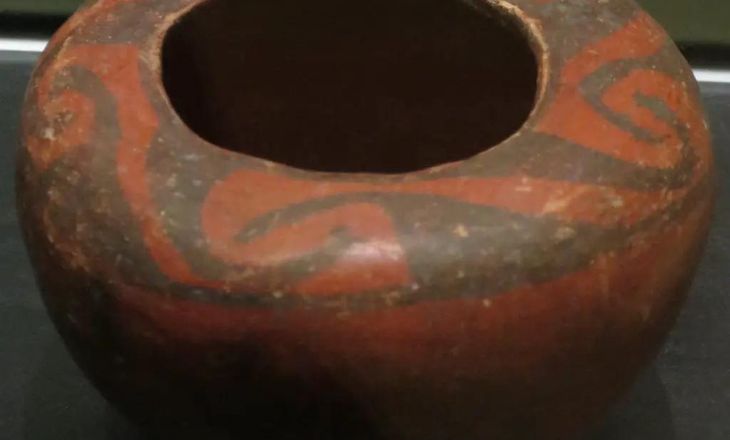
We see how oral traditions and visual creativity combine to produce an engaging fabric that conveys the spirit of community, humour, and wisdom via a combination of storytelling and ceramics. The continuation of these customs encourages us to interact dynamically with tales in a way that is not limited by time or place, which improves our awareness of cultural heritage.
Conclusion
The study of ancestral Pueblo pottery offers a fascinating glimpse into the cultural and artistic traditions of the ancient Southwest. By understanding the techniques, styles, and symbolism of this pottery, we can gain deeper insights into the lives and beliefs of its creators.
This guide provides a valuable resource for both scholars and enthusiasts interested in delving into the world of ancestral Pueblo pottery. Let’s keep exploring, learning, and celebrating the rich legacy of ancestral Pueblo pottery.
FAQS
What Does the Pueblo Pottery Symbolize?
Pueblo pottery holds deep cultural and symbolic significance for the Pueblo people of the American Southwest.
What Materials were Used in Ancestral Pueblo Pottery?
The most common materials used in Pueblo pottery include clay, temper, and pigments. Clay is the primary material for forming pottery vessels, with different types of clay.
